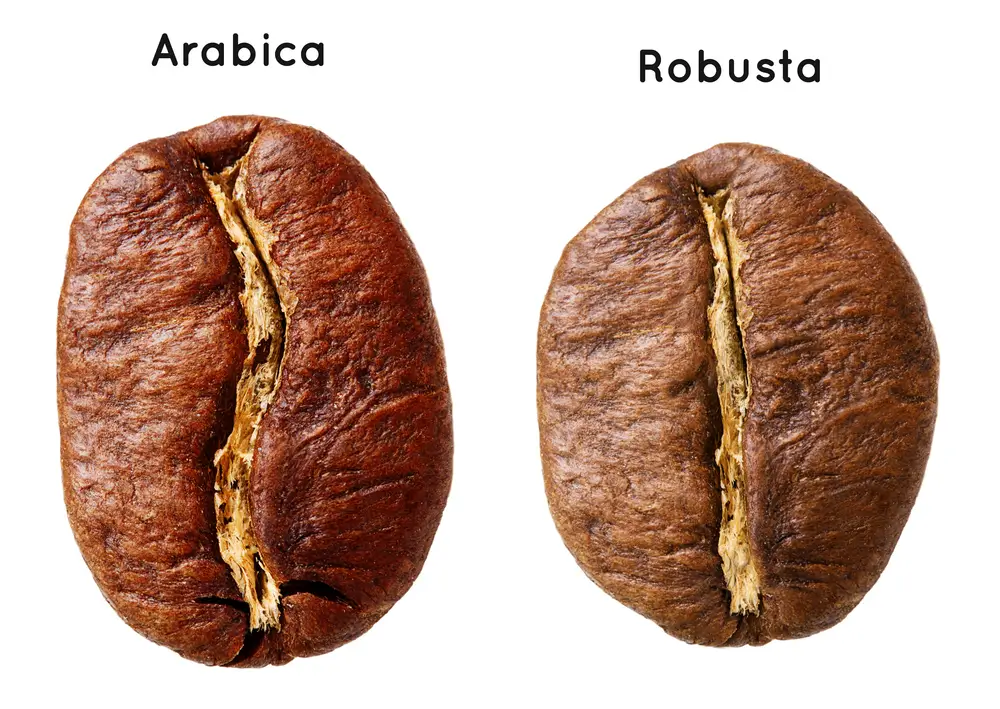Embark on a flavorful journey with Ethiopian coffee, known for its rich diversity and deep cultural roots, as we explore what makes this origin special in the coffee world.
Key Takeaways
- Ethiopian coffee is celebrated for its rich flavors ranging from bold and fruity to bright and floral, depending on the region.
- It’s traditionally produced using artisanal methods that highlight its unique flavor profiles, including natural, washed, and honey processing.
- Key growing regions like Sidamo, Harrar, and Yirgacheffe each offer distinct taste notes, from chocolatey to citrusy.
- Authentic Ethiopian coffee brewing respects the bean’s heritage, enhancing its natural flavors.
The Story of Ethiopian Coffee
Ethiopia has a special story about how coffee started. Long ago, a goat herder named Kaldi noticed his goats were very energetic after eating red berries from a bush. Curious, Kaldi tried the berries himself and felt more awake. He took these berries to a nearby monastery. At first, a monk didn’t like the berries and threw them into a fire. But soon, a wonderful smell came from the fire. The monks took the beans out of the fire, ground them up, and made the first coffee.
People in Ethiopia have been growing and drinking coffee since the 9th century. The weather there is perfect for growing coffee, with the right amount of rain, high land, and stable temperatures. In Ethiopia, coffee is more than just a drink; it’s a part of important social events. Families and friends roast coffee beans together, grind them, and brew them in a special pot called a ‘jebena.’ This coffee-making process is a way to bring people together and show hospitality.
What are the distinctive flavors and characteristics of Ethiopian coffee?
Ethiopian coffee is renowned for its wide range of flavors, which vary by region. Sidamo is known for its bright and citrusy notes, Harrar for its bold, fruity flavors with hints of blueberry, and Yirgacheffe for its floral and tea-like qualities. The coffee’s diverse flavors are enhanced by traditional processing methods such as natural, washed, and honey, which contribute to its complexity and aromatic richness.
Where is Ethiopian Coffee produced?
Ethiopia’s landscape is very diverse, which means it has many different types of climates and soils. This variety helps create several unique areas where coffee is grown, each known for its special flavor. Here are the main regions where Ethiopian coffee comes from:

- Sidam
Sidamo is in the south of Ethiopia and is well-known for its excellent Arabica coffee. The coffee here is usually wet-processed, giving it a wonderful aroma and a bright, sharp taste. It often has floral and citrus flavors, and sometimes you might notice a berry hint too. Within Sidamo is the famous Yirgacheffe area, where the coffee is especially valued for its gentle, tea-like qualities.
- Harrar
Harrar is located in the eastern part of Ethiopia and is one of the oldest places in the world where coffee is grown. The coffee from Harrar is usually dry-processed, which gives it a strong, wine-like flavor with a fruity and somewhat wild taste. These coffees are known for their full body and sharpness, and they often have complex flavors of chocolate, spice, and blueberry.
- Jimma
Jimma is found in the southwest of Ethiopia and was traditionally known for ‘Jimmah Coffee,’ a simpler, natural type of coffee. Recently, though, the quality of coffee from Jimma has greatly improved thanks to better processing methods. Today, the coffee from Jimma is well-balanced, with a full body, gentle flavors, and just a touch of acidity.
- Ghimbi
Ghimbi is in the western part of Ethiopia, where the coffee is grown and wet-processed. Ghimbi coffees are known for their full body, strong acidity, and complex flavors. These coffees have a richer and more detailed taste compared to those from the southern regions of Ethiopia.
- Bench Maji
Bench Maji, a lesser-known area in Ethiopia, is famous for producing the highly sought-after Gesha coffee, which originated from the village of Gesha. This coffee variety has won international praise for its unique floral and chocolate flavors, paired with a lively acidity.
Processing Methods for Ethiopian Coffee
In Ethiopia, the way coffee beans are processed varies by region and significantly affects the taste of the coffee. Each processing method gives the coffee unique characteristics.

Here are the main methods used in Ethiopian coffee production:
1. Natural Process (Dry Process)
The natural process is the oldest way to process coffee, often used in places like Harrar. In this method, the whole coffee cherry is dried under the sun, which usually brings out a full-bodied, sweet, and complex flavor. This process highlights the coffee’s fruity qualities, sometimes giving it a wine-like taste with notes of blueberry, strawberry, or tropical fruits. It emphasizes the natural sweet and fruity flavors of the coffee bean.
2. Washed Process (Wet Process)
The washed process is mainly used in areas like Sidamo and Yirgacheffe. In this method, the outer fruit layer of the coffee cherry is removed before the beans are dried. This technique results in a cleaner, brighter, and more uniform flavor. It brings out the coffee’s natural acidity and gives it a lighter body with floral and citrus notes, often creating a refined and elegant cup of coffee.
3. Honey Process
The honey process is not as common but is becoming more popular. In this method, some of the fruit’s sticky layer (mucilage) is left on the coffee bean while it dries. This process gives the coffee a sweet, smooth, and slightly syrupy flavor. It combines features of both the natural and washed processes, creating a balance of strong sweetness and light acidity, with flavors of honey and gentle fruit notes.
How to brew Ethiopian Coffee
Brewing Ethiopian coffee is a careful balance of art and science, aimed at enhancing its distinctive flavors. Whether you enjoy a robust cup from Harrar or a subtle one from Yirgacheffe, knowing the right way to brew can greatly improve your coffee experience.

Here are some essential tips and techniques to help you brew the perfect cup of Ethiopian coffee:
- Choosing the Right Grind
- The grind size should match your brewing method. For instance, use a fine grind for espresso and a medium-coarse grind for pour-over. Ethiopian coffees, with their diverse flavor profiles, often benefit from a medium grind that allows a balanced extraction without overpowering the coffee’s inherent subtleties.
- Water Quality and Temperature
- Use clean, filtered water to avoid any off-flavors. The ideal water temperature for brewing coffee is between 195°F to 205°F. This range is crucial for Ethiopian coffee, as too hot water can extract bitter compounds, while too cool water might not extract enough flavor.
- Brewing Method
- Ethiopian coffee shines in manual brewing methods like pour-over, French press, or Aeropress. These methods allow control over the brewing time and temperature, helping to accentuate the complex flavor notes. For a bright and clean cup, try the pour-over method. For a fuller body with more texture, a French press works well.
- Brewing Time
- The contact time between water and coffee should be adjusted according to the grind size and brewing method. Generally, pour-over methods take about 2-4 minutes, while a French press might take about 4 minutes. Experiment with the brewing time to find the sweet spot that best captures the essence of the Ethiopian beans you are using.
- Serving and Enjoying
- Ethiopian coffee is best enjoyed fresh, directly after brewing when its aromatic compounds are most volatile. Serve it in a pre-warmed cup to maintain its temperature and aroma. Take the time to savor the coffee’s aroma before tasting, and try to identify the different flavor notes, which can range from floral and citrusy to chocolatey and nutty, depending on the region and processing method.
Closing Thoughts
Dive into the world of Ethiopian coffee, where each sip tells a story of tradition, from ancient coffee ceremonies to diverse regional flavors. This coffee not only offers a taste of Ethiopia’s rich landscapes but also reflects its enduring cultural heritage in every cup.
Stay tuned for more coffee brewing guides, recipes, and bean roasts.


